A cloud-based remote monitoring and analytics platform for remote-working in the Manufacturing sector
06/08/2021 - Dr Andrew Gordon
With advanced data analytics becoming a key enabling technology across the Manufacturing Sector, there is now the potential for automated large-scale process systems, as well as the analytics driving decision making, to be managed away from the factory floor. With Innovate UK funding, Advanced Analytics Labs (AAL) have developed a cloud-based remote monitoring and analytics platform which will enable production engineers and managers to remotely view the state of factory systems, interact with AAL's advanced machine learning models and communicate with on-site staff in order to effect interventions. This represents a step-change for how the factory floor can be managed in a remote fashion, for both this and potential future pandemics, or even if remote-working is sought to become more commonplace.
The onset of the global pandemic has greatly disrupted the way that we, as a society, conduct business. Due to social distancing requirements, many businesses have had to rapidly adapt to new ways of operating remotely, or potentially face closure. This is of particular concern in the manufacturing sector. A study carried out by Leesman [1] showed that the manufacturing and industrial engineering industry is not prepared for working from home - in a survey of 700,000 employees worldwide, 53% of those working in the manufacturing sector had no experience of working from home. The main risks reported by respondents in the study included reduced social interaction, knowledge transfer and learning from others.
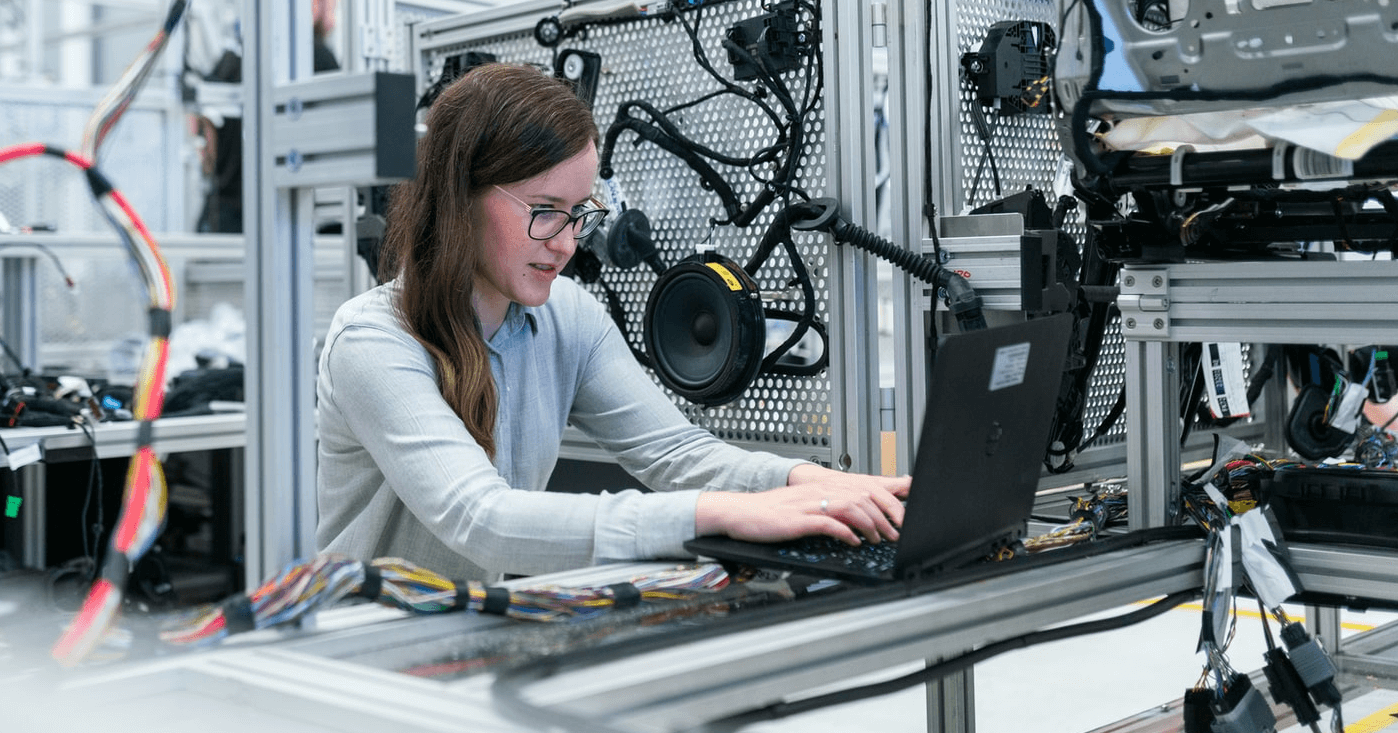
Conventional factory management and process control systems are commonly integrated on-site, requiring monitoring, management and intervention from engineers directly on the factory floor. However, with the recent lockdown imposed by the Covid-19 outbreak, many manufacturers have been forced to either reduce production throughput due to implementation of social distancing initiatives, or else suspend production indefinitely. Such manufacturing companies may have been designated as a 'non-essential business', however, often the products they manufacture, for example, hard-disk-drives, machine parts and medical components, are essential to facilitate working from home, derive innovation and maintain societal harmony. For manufacturing companies, the financial impact of this can lead to business closure and the redundancy of employees. Since manufacturing companies often recruit employees in a range of roles from the surrounding geographical area, this can lead to the decline and deterioration of communities which are already struggling due to the restrictions imposed by the lockdown.

As a starting point for the development of our cloud-based remote monitoring and analytics platform, it was important to define how our software could communicate with factory devices - in other words, establishing the protocol through which device readings and statuses may be read and viewed by the software. To this end, we selected the popular MTConnect protocol - an open, royalty-free manufacturing communications protocol which allows a high level of interoperability between manufacturing devices and software from different suppliers. Other protocols for factory floor devices exist, but this one was chosen based on its popularity and use in a variety of manufacturing organisations. We are considering the incorporation of additional protocols as part of our future development. Installation of the developed software within a manufacturing process is simple and takes the form of a small module containing a program which streams the factory device data values, conditions and events (via the MTConnect protocol) on a customisable schedule eg. updating every 10 seconds. Updates from the devices on the factory floor are seamlessly provided to a user interface via the cloud, allowing remote-working staff to remain aware of the state of devices considered vital to production.
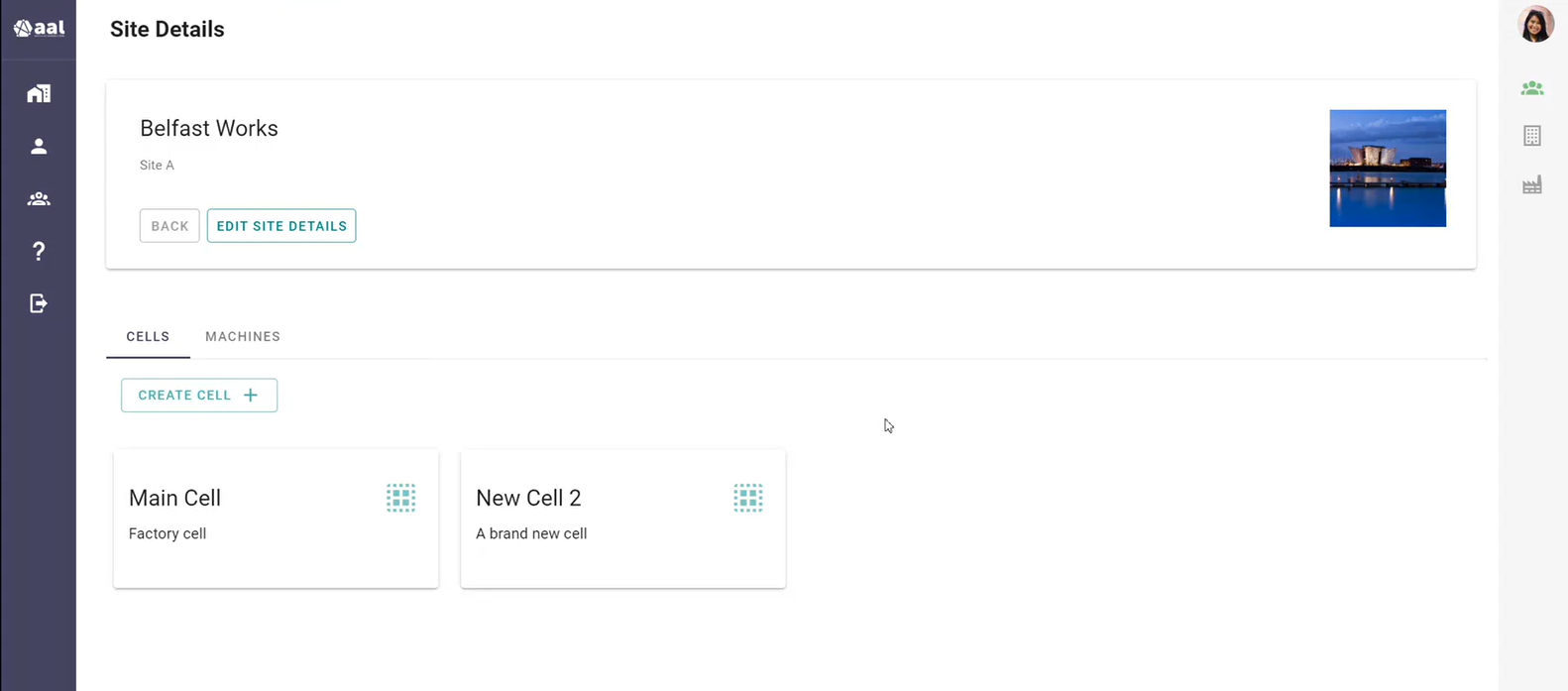
The remote user can select the particular factory site they wish to view, and create a profile of the factory devices they wish to monitor, as an individual cell. This cell view provides a dashboard of the most crucial information for the factory devices selected by the user. This takes the form of a novel aggregate score developed by AAL, representing the overall condition of the device, together with a breakdown of the constituent component sub-conditions, allowing the user to see the most important device performance information at a glance.
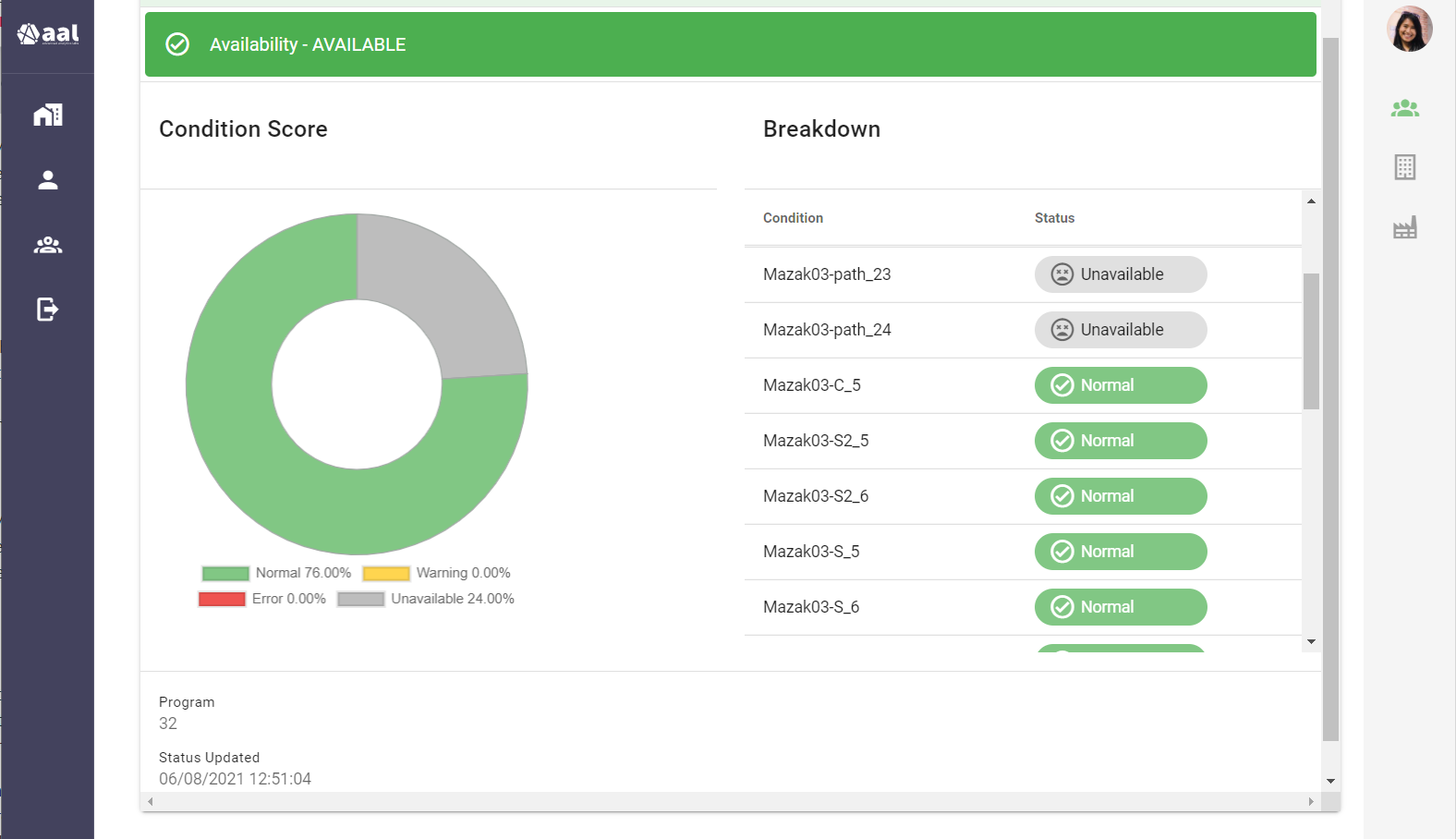
Drilling down into this information further, a separate tab shows the latest reported value for each and every data item for a given device, spanning across samples, conditions and events. This list is both filterable and searchable, for ease of use by the user.
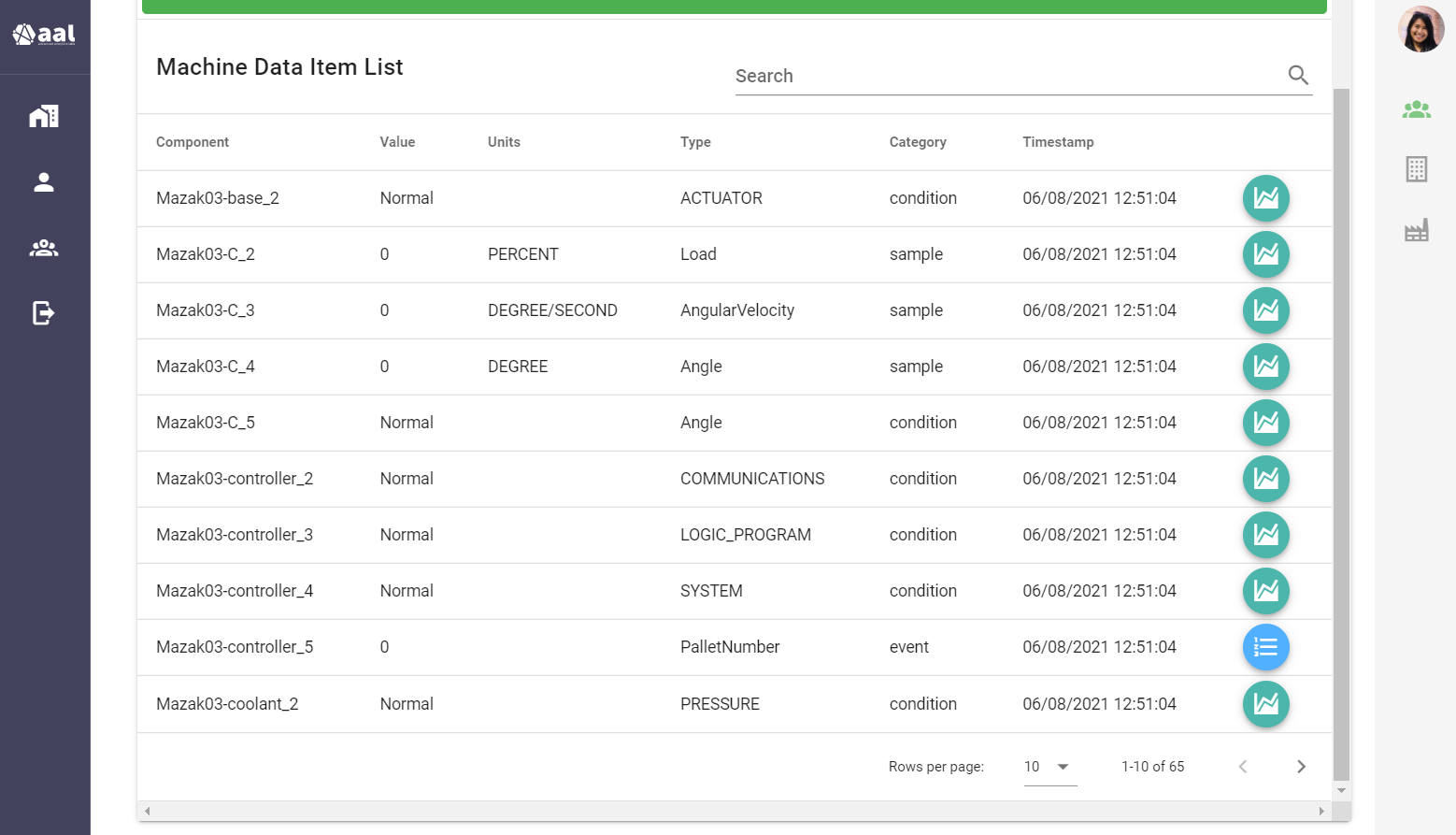
Each data item has a dedicated analytics panel, showing a range of both summary and in-depth analytics measures for that data item, calculated over a customisable time range eg. last 24 hours, last 7 days. These include measures of spread (eg. mean, standard deviation, interquartile range) and lists of the most extreme values, accompanied by user-friendly charts which can be scaled, zoomed, examined and saved by the user. Additionally, a powerful novel anomaly detection algorithm will display reported values for the data item which are unusual and inconsistent with the remainder of the data reported. This provides a powerful tool whereby the user can see at which points over time that particular data items (and in turn, the device itself) has been operating in an unexpected manner.
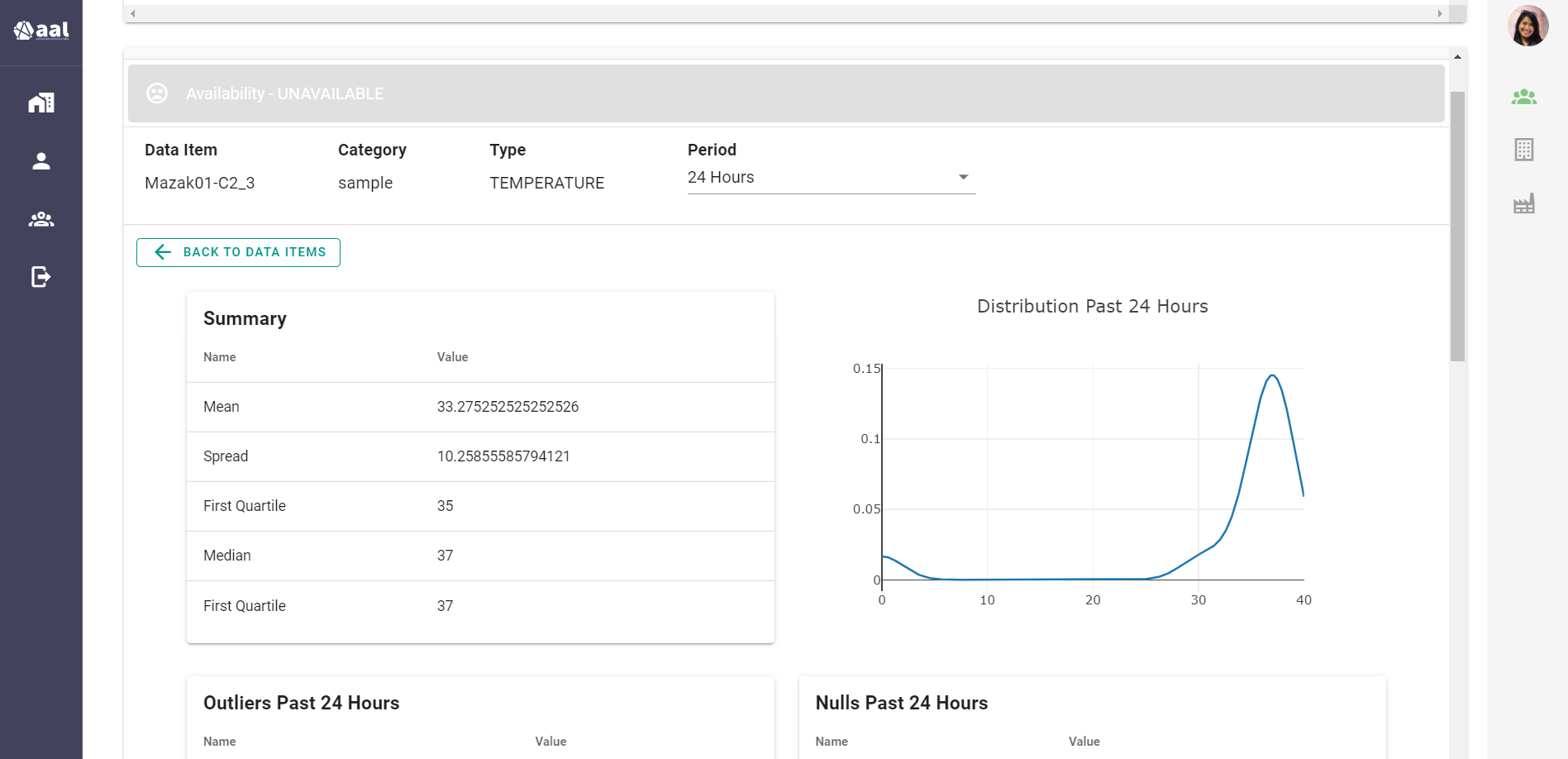
Given the challenge of remote-working, we have provided a number of ways in which remote users of the developed application can communicate and liaise with the reduced number of staff working on the factory floor. This could be necessary in order to physically investigate a device or to carry out an intervention. The first method of communication is through a two-way chat feature, whereby users may communicate with each other directly. We have also included a company-wide chat thread as well as the ability to create other threads of sub-users, eg. cell-wide or site-wide. The second method of communication is through a virtual logbook, where users may make a textual log, which is timestamped, of any events which occur, as well as actions taken. This can be useful for simply checking-in with certain devices, providing feedback on actions taken on the production floor and flagging up issues.
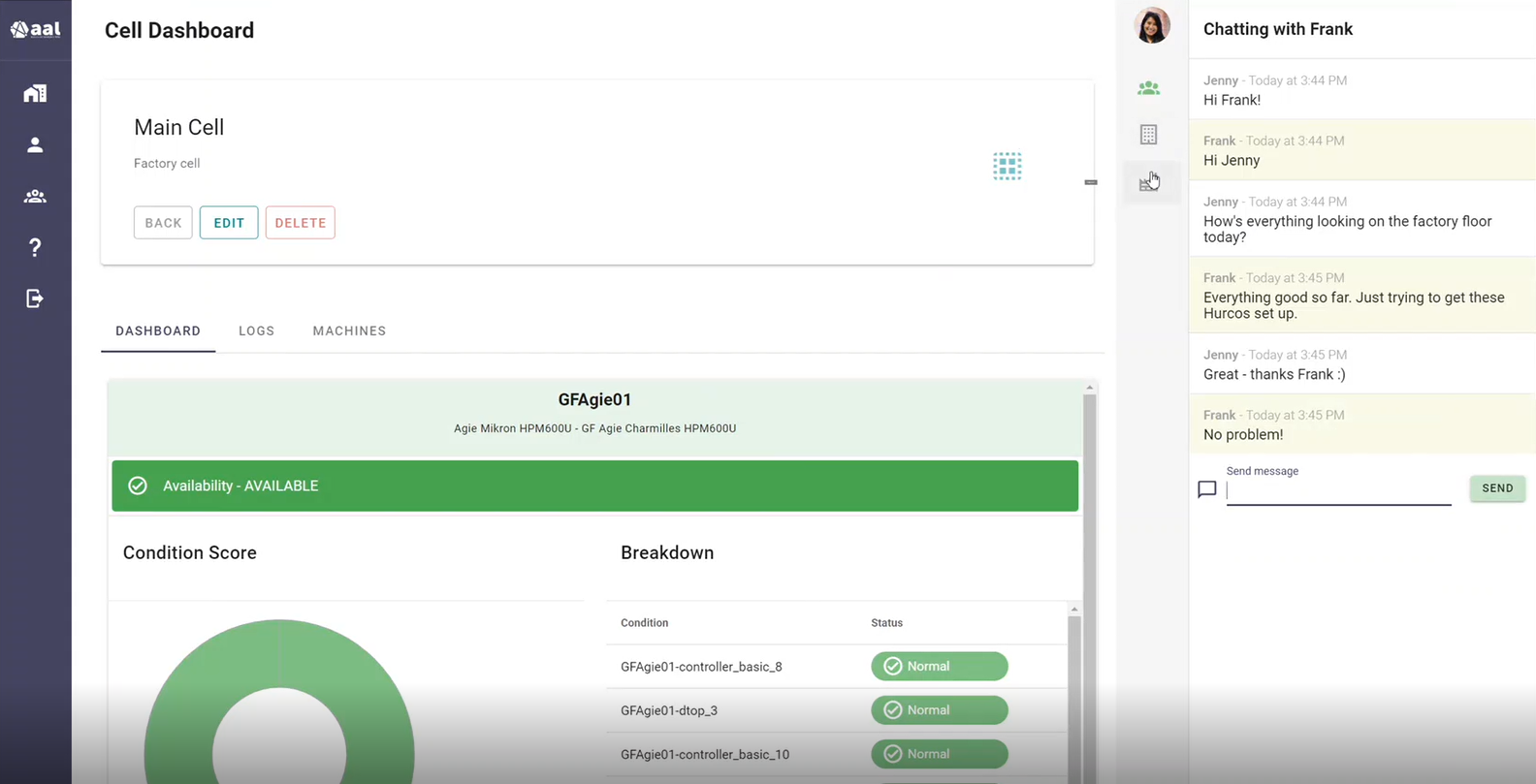
Finally for now, because of the complexity of device protocols, such as MTConnect, we have included a helpful glossary of terms within the software. This gives a detailed overview of the phraseology for the different device data items and components, broken down into three categories - conditions, samples and events - as laid out in the official MTConnect documentation.
This is just the beginning - we have a detailed product roadmap, packed full of features we would like to include. If you are a manufacturer, then we would be delighted to chat with you and take on board any advice, feedback or suggested features. We are always excited to speak with domain-knowledge experts! Our motivation is to provide the capability for manufacturers to get business back on track after an economically difficult lockdown period, and we hope that a software product such as this can allow the necessary workplace-distancing, as well as providing powerful analytics insights, to drive the industry forward.
References: